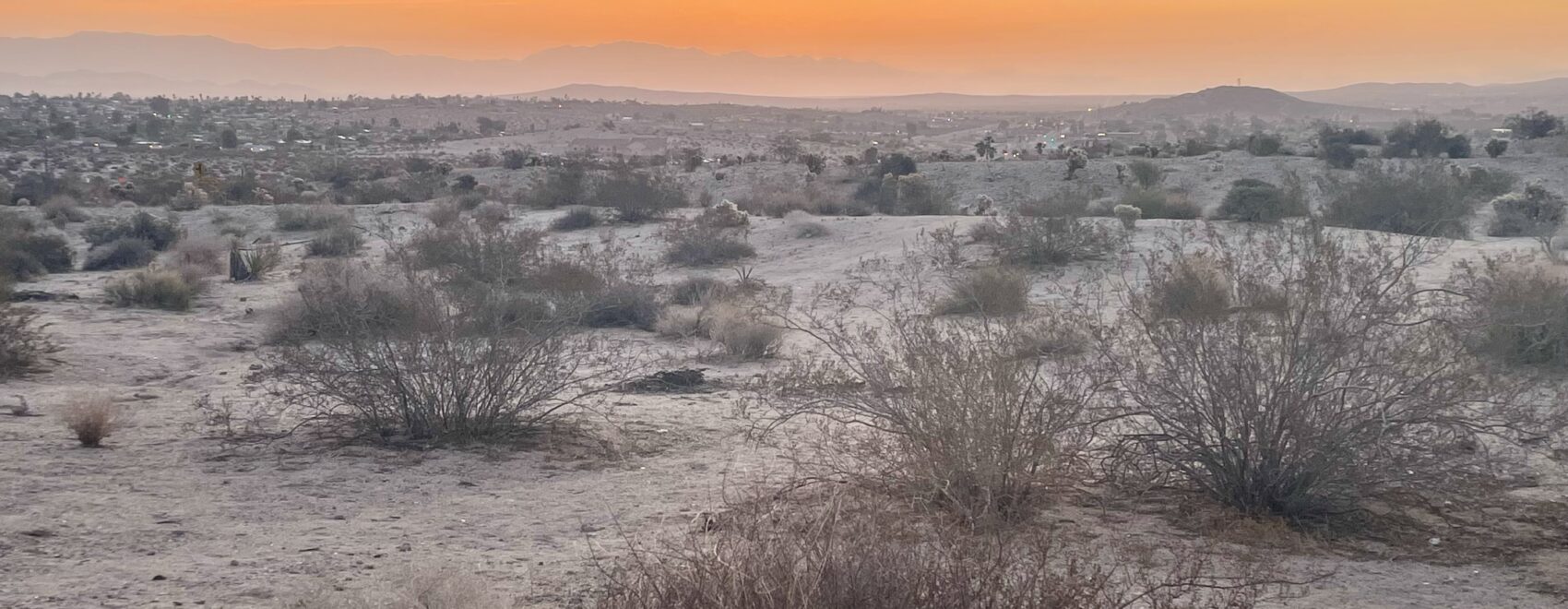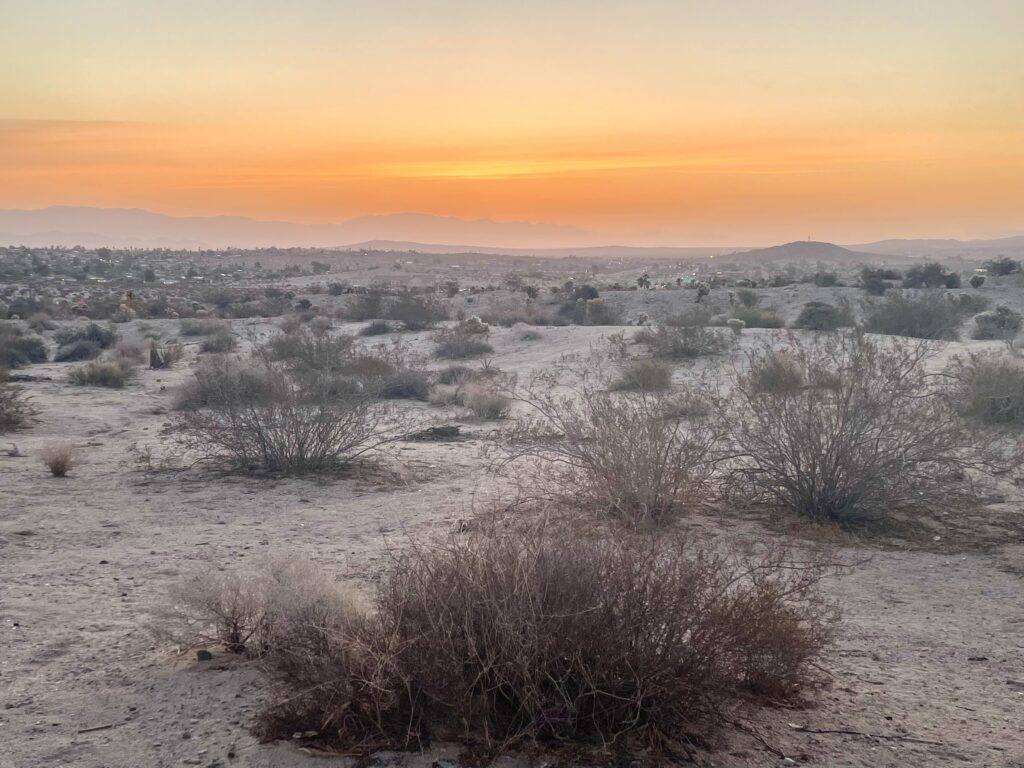
Desert Sunrise from Harmony Motel
My goal is to invite friends and colleagues to join in on my adventures, but sometimes I like the solitude of travelling solo. One of these occasions was my trip to southern California, where I visited two national parks – Joshua Tree and Death Valley. Both offer breathtakingly beautiful natural settings and distinctive locations that are unmatched anywhere in the world. Both are ideal for adventure lovers, ardent hikers, and inquisitive explorers.
Here are highlights from my solo hiking trip!
Getting There
The trip is relatively easy to execute using two major airports and a few short drives via rental car. I flew from Toronto to LAX and drove 2 ½ hours east to Joshua Tree. After 3 days there, I drove 4 hours north to Death Valley for several more days of hiking and then drove another 2 hours east to Las Vegas for the return flight to Toronto. I’d recommend this way to experience both of these NPs together.
Staying There
At Joshua Tree, I recommend staying somewhere along the north side of the Park in the towns of Joshua Tree or Twentynine Palms, allowing easy access. This facilitates an early entrance into the Park before the line-up of cars begins. I chose to stay at the inexpensive Harmony Motel because that’s where U2 stayed when they cut their album, The Joshua Tree.
At Death Valley, I recommend the splurge to stay at The Inn at Death Valley because its location in the heart of the Park can’t be beaten, and it is luxurious indeed! Otherwise, you’re driving for miles from outside the Park. Plus, I love the atmosphere of these grand luxury lodges in the national parks.
The JT Desert
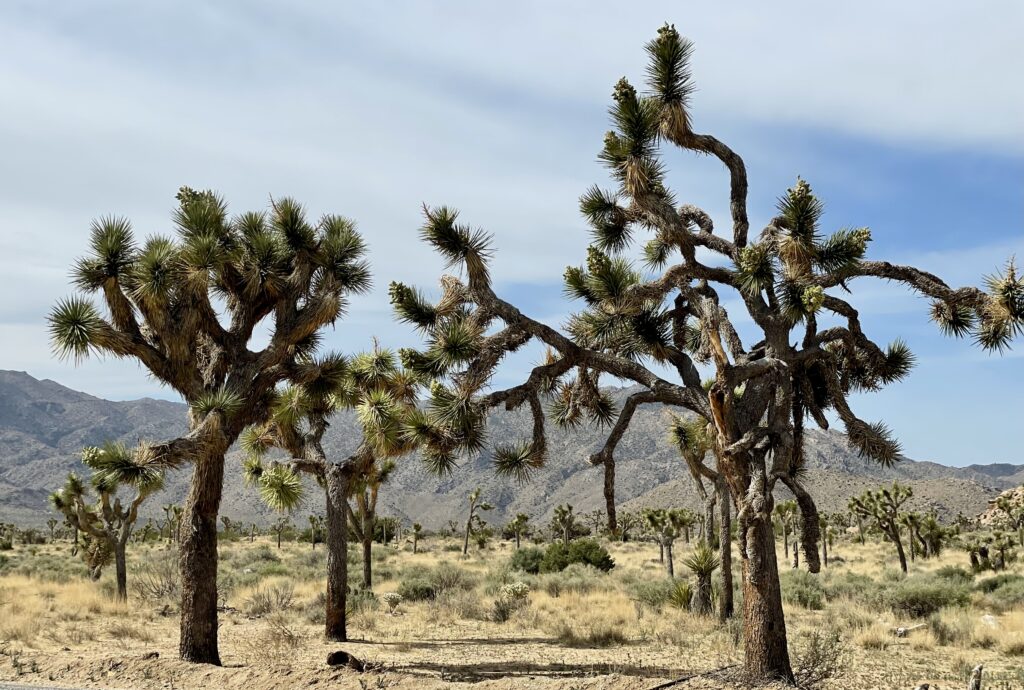
Besides the sun and warmth, I came to Joshua Tree (aka JT) to experience desert hiking, practice sunrise/sunset photography on my iPhone, and take in a bit of local counter-culture.
JT is large, the size of Rhode Island, and covers 800,000 acres of Mojave and Sonoran Deserts, the former sitting about 2,000 feet higher than the latter. Most of the action is on the higher, cooler, slightly wetter Mojave plateau. That’s where you find the Joshua Trees and Fan Palms and the rock formations which make JT a world-renowned climbing mecca. The only thing worth seeing in the lower, hotter Sonoran Desert is the broad diversity of cacti – particularly at the Cholla Cactus Garden, which has a nice ¼ mile path. That took a half hour. Otherwise, it’s all about the Mojave.
Desert Hiking
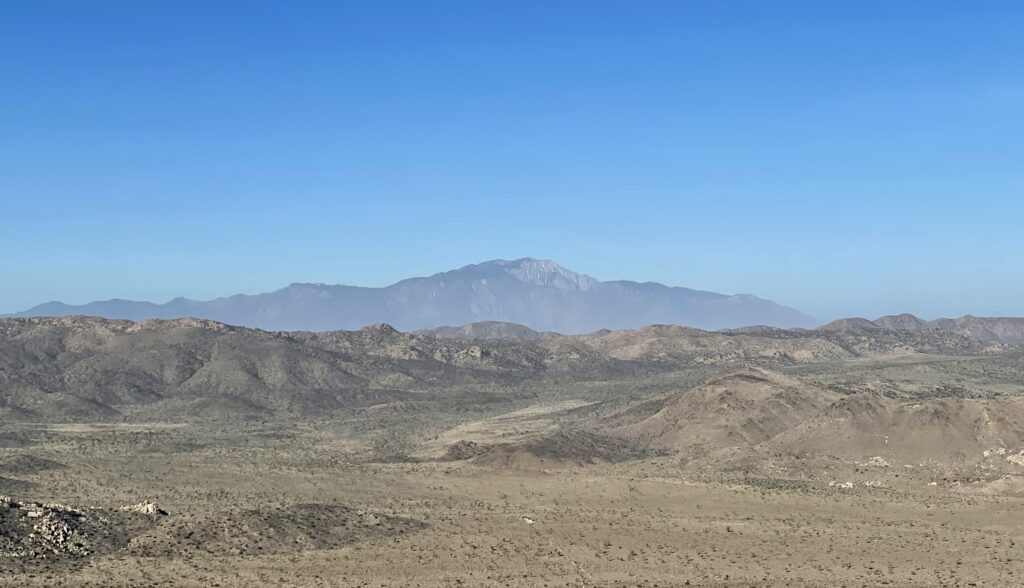
Park Boulevard is the primary paved road through the Mojave section of JT, and it’s where I spent my time doing short, self-guided hikes to interesting sites like Skull Rock, Jumbo Rocks, Hidden Valley, and Ryan Mountain. None of these lasted longer than 3 hours – short, interesting hikes are what this Park delivers. It is best to do these in the morning hours when JT is at its coolest, and the morning light doesn’t disappoint. Sunrise was at 6:15 am, and I was on the trail not long thereafter every day. Many thanks to the staff of the local Starbucks, who open the doors every morning at 4:30 am!
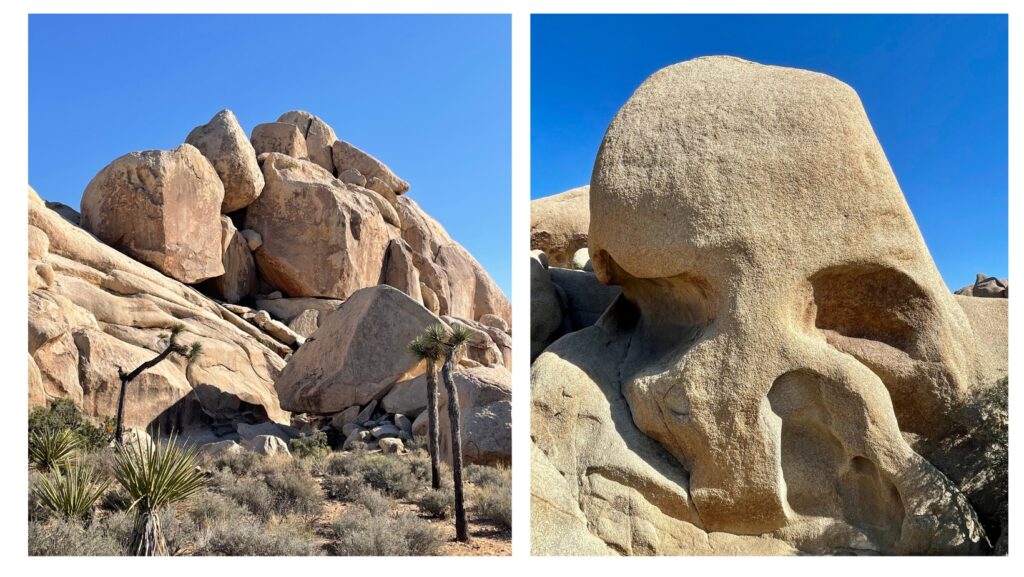
I highly recommend joining one of the very informative, ranger-guided talks/hikes. Most are under an hour. I learned All About Joshua Trees on an aptly-named talk along the Cap Rock Nature Trail. Well worth it!
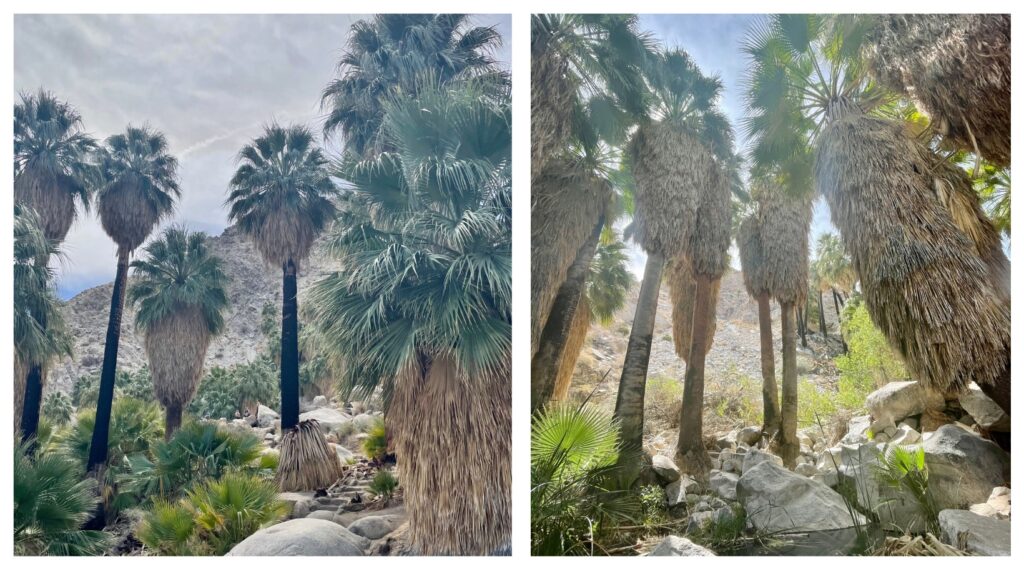
One last hike not to be missed is the 3-mile round-tripper to 49 Palms Oasis. Set in the high desert, nestled at the foot of a small mountain, is a lush oasis with nearly 50 California fan palms (hence the name) rising to 50 feet. It’s a great spot for a morning hike and a cool, shady lunch under these majestic palms.
A Not-So-Fun Fact: One concerning development is the potential extinction of Joshua Trees as a casualty of global warming. Turns out that these trees propagate solely via a moth whose larvae stage is timed to coincide with the trees’ flowering. More recently, Joshuas have been flowering earlier before the moth larvae have arrived to do their deed and spread the seeds. So, no propagation. Some experts forecast that the trees will be gone by the end of this century.
Side Trip: Palm Springs & San Jacinto
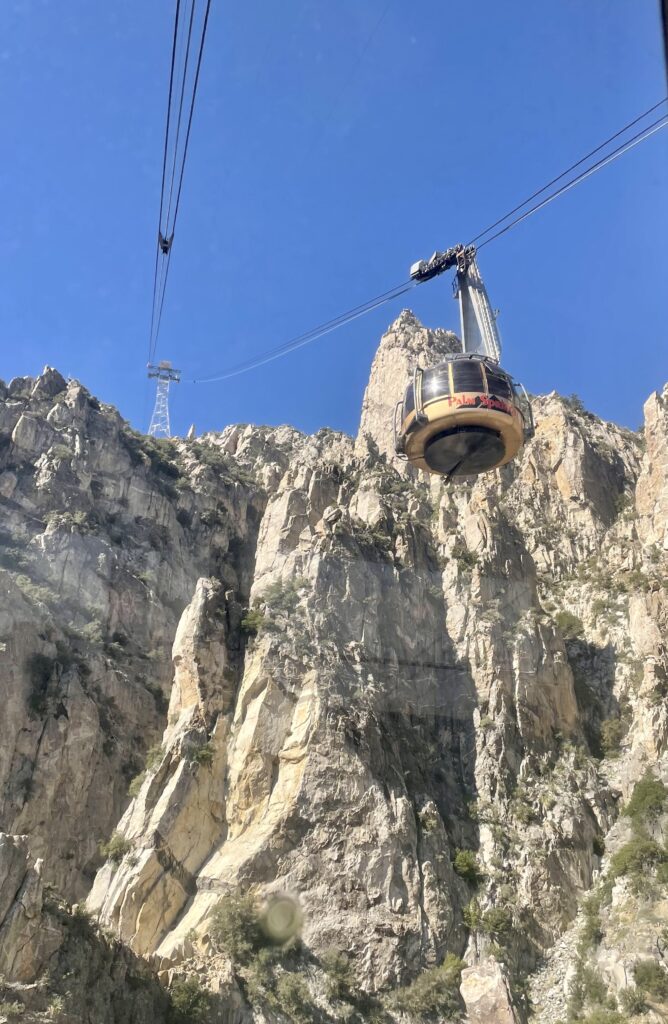
Before leaving JT, I decided to take a day off from the desert heat and venture up into the San Jacinto Mountains via the Palm Springs Aerial Tramway.
Whoa! The Tram ascends 6,000 vertical feet in 10 minutes! The temperature plummeted from the mid-80s to the mid-40s. Fortunately, I had my Patagonia parka, hat, gloves and backpack. Unfortunately, I had not brought my compass or downloaded the trail map, so my attempt to summit San Jacinto Peak (10,834 ft) was foiled by a lack of cell coverage and snowpack masking the trail. And, truth be told, I was also a bit put off by the posted signs advising against hiking solo or with small children due to the presence of mountain lions. So, I opted instead for more highly-trafficked, well-defined trails.
A short walk from the Tram terminal will lead you to spectacular viewpoints. The vista stretches across Palm Springs, the Mojave and Sonoran deserts, and mountains. But for those impacted by vertigo, you might find the tram ride challenging: the tram cabin is revolving, moving slowly counter-clockwise throughout the vertiginous journey. I found that awesome! Some of my fellow passengers looked a bit green.
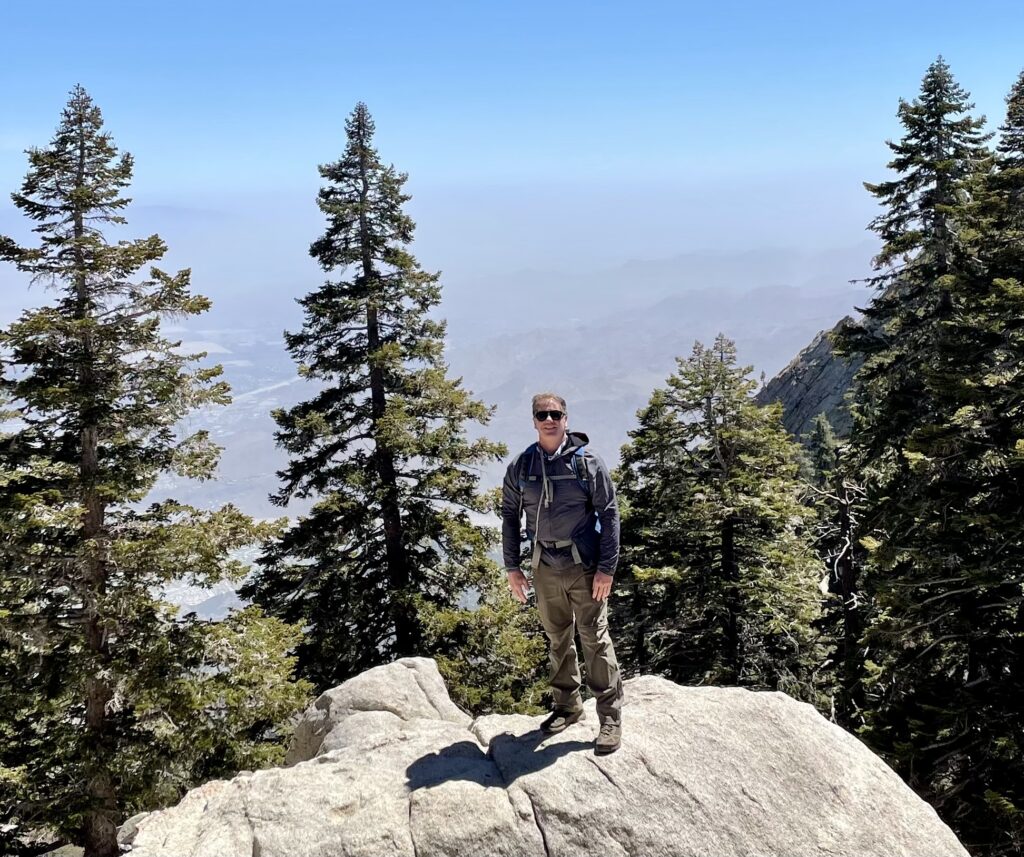
Death Valley – Land of Extremes
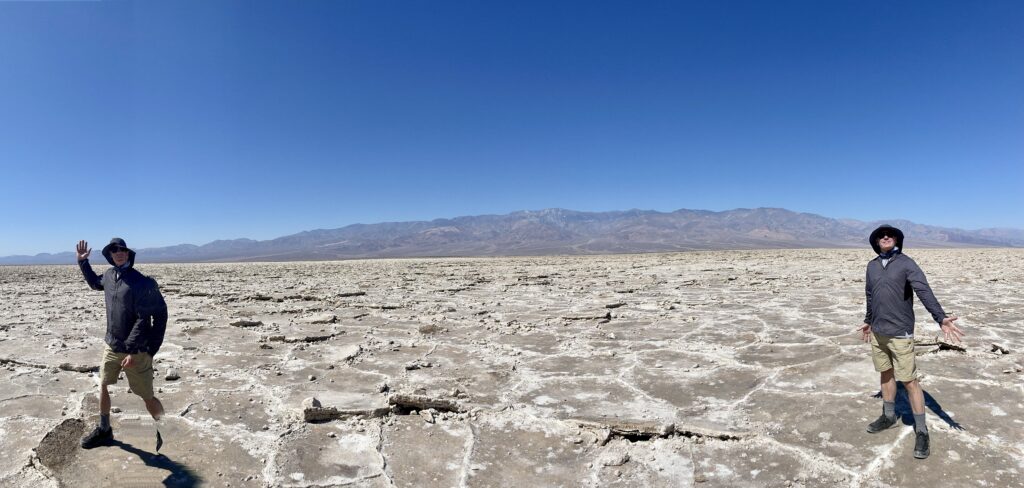
Hottest, lowest, driest.
Death Valley holds the official record for the hottest temperature on earth! It was recorded in 1913 near the (aptly named) town of Furnace Creek – 134.1 F (or 56.7 C). Death Valley also boasts the lowest elevation in North America — 282 ft (86 m) below sea level! And the Valley is the driest spot, in some years receiving no precipitation. Now, that’s dry!
Death Valley “Must-Do’s”
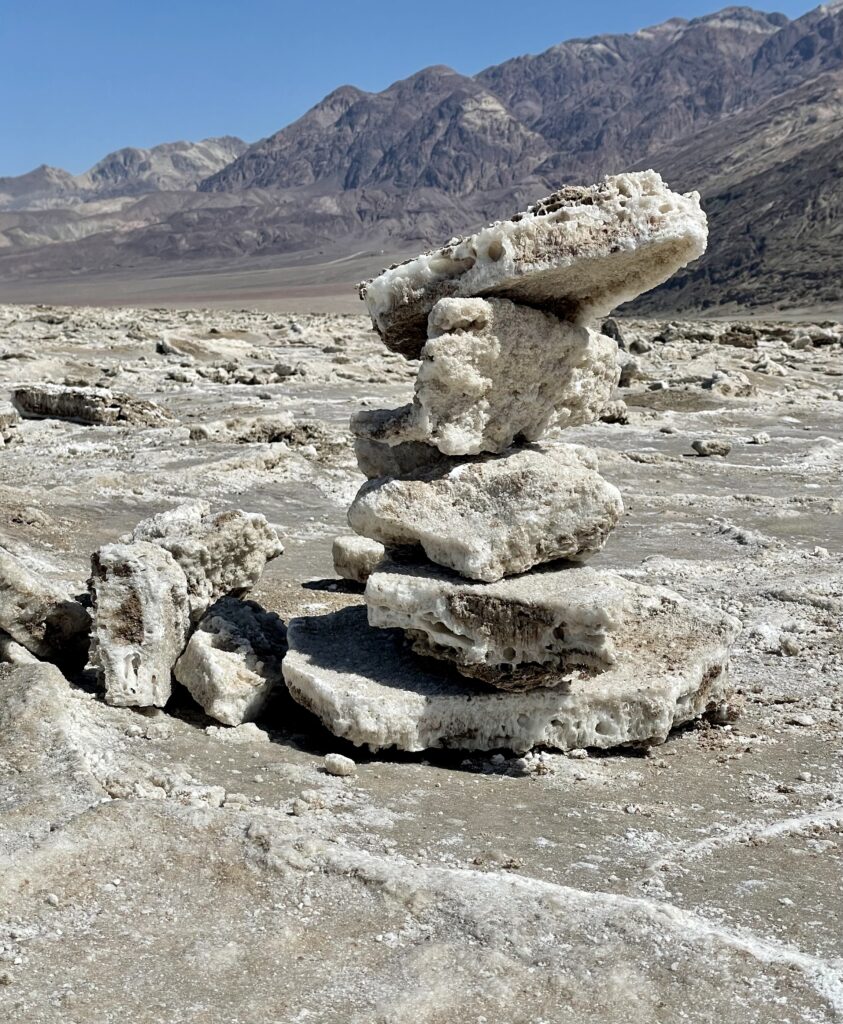
Death Valley is huge – about double the size of Rhode Island – and is ringed by snow-capped mountains which rise to 11,000 feet above the valley. What a dramatic backdrop to the desert! I decided to experience both the valley floor and the mountain vista. I found that one full day in the valley enabled me to visit most of the best spots, as they are situated alongside one primary road. Badwater Basin is a “must do” as it marks the lowest point in North America. Here, you can walk out onto the salt flats – the ground is not sand but a hexagonal, honeycombed-shaped salt crust. Really cool!
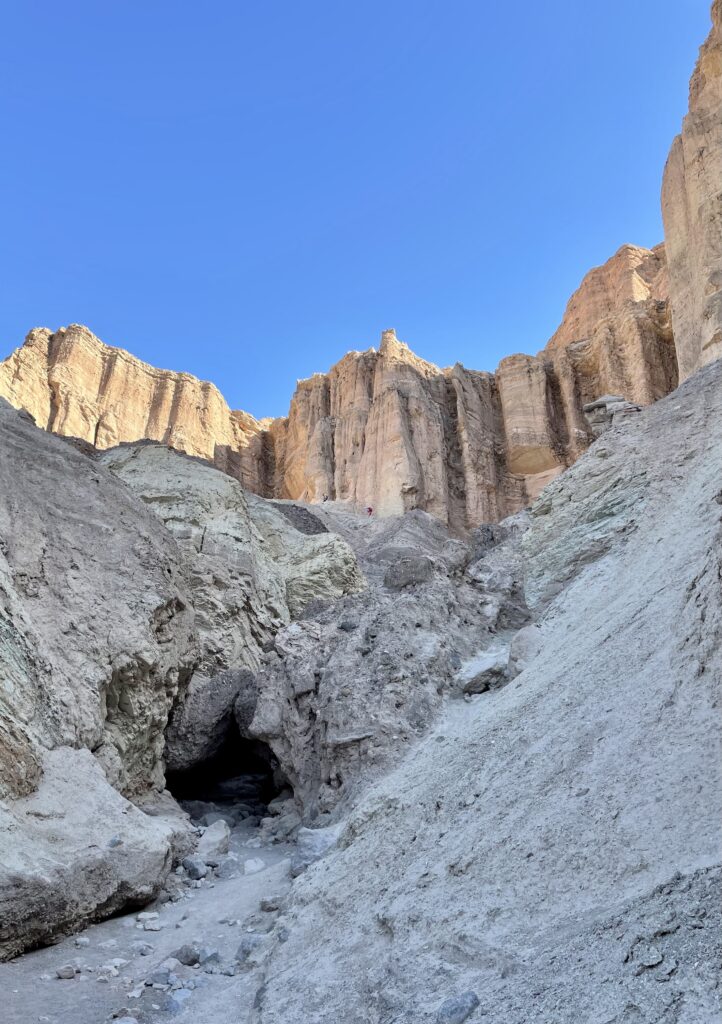
Golden Canyon is a short drive away and offers the best experience, in my opinion, as you get some terrific views from a hike that’s but a mile each way.
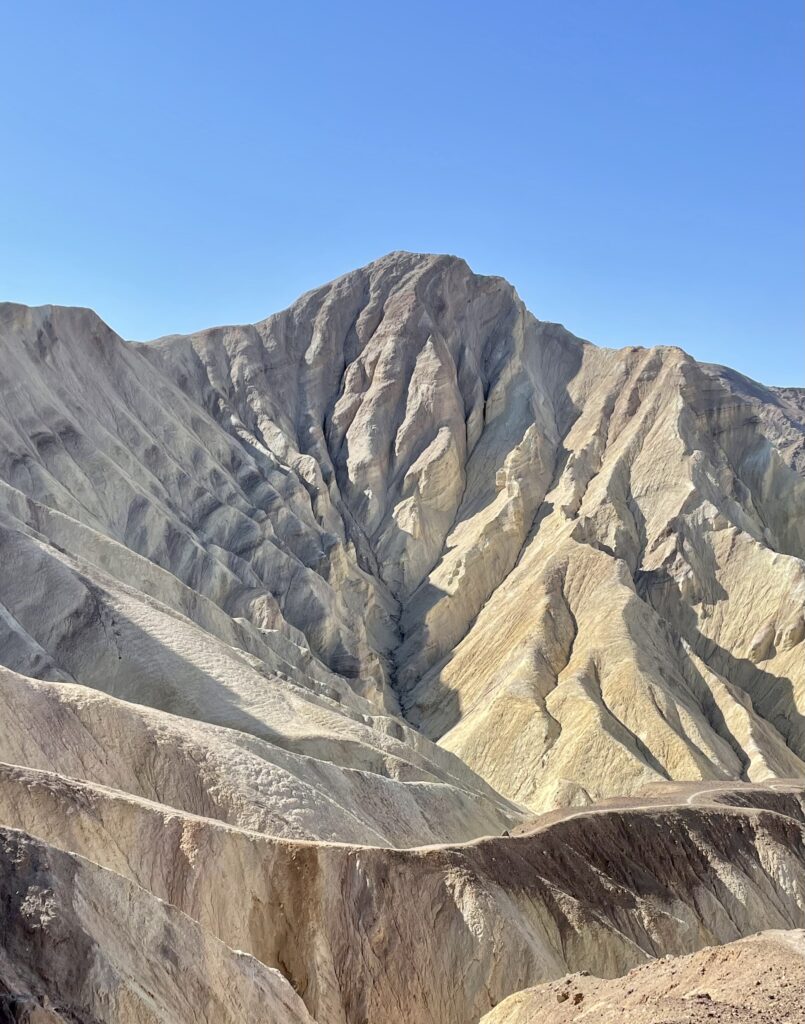
Nearby, Natural Bridge is a nice stretch of the legs, but I saw many better arches at Arches NP. It’s a flattish half-mile so you can make it in a half-hour jaunt if you want.
Artists Drive, a scenic 9-mile loop of road near Natural Bridge, is another “don’t miss” opportunity; the drive takes you through canyons and past mountains of multi-hued rock – green, blue, purple – which are visually stunning. And there’s a cool maze of paths at the best viewing area called Artists Palette.
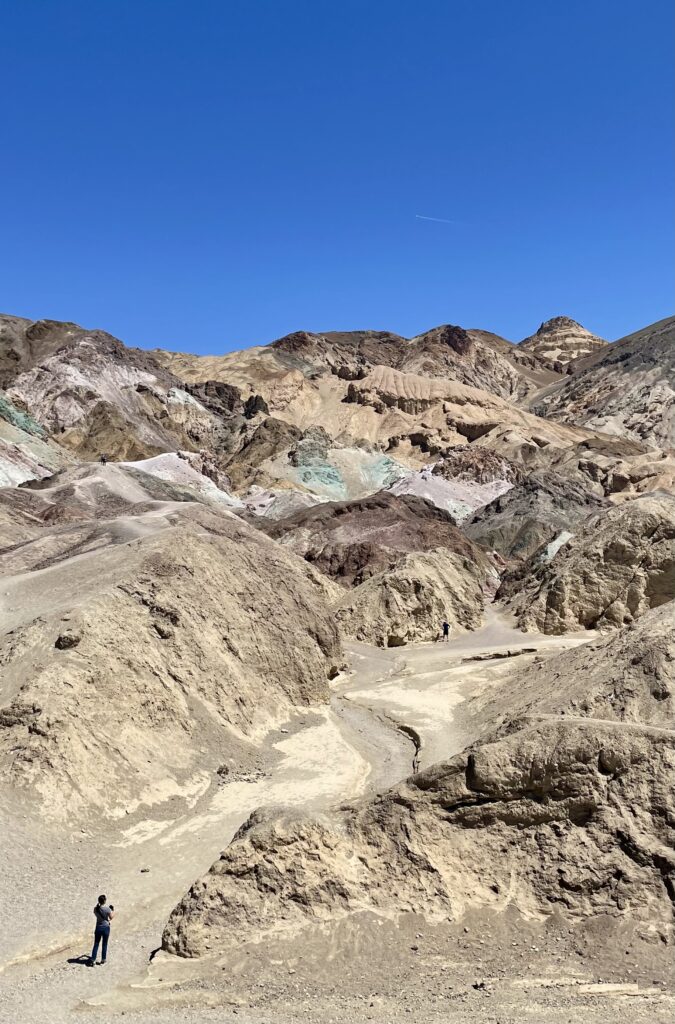
The only other “must see” sight are the Mesquite Flat Sand Dunes. What I found surprising is that less than 1% of the Death Valley desert here is covered with sand! I’m told this spot is particularly dramatic at sunset but I had to catch the dunes mid-day, which as you can see from the photo, are still absolutely awesome.
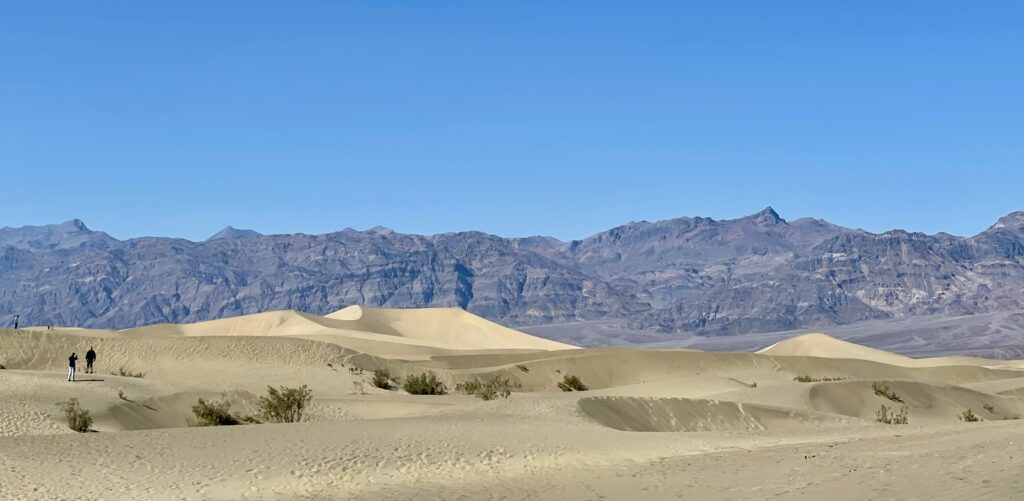
Above the Valley
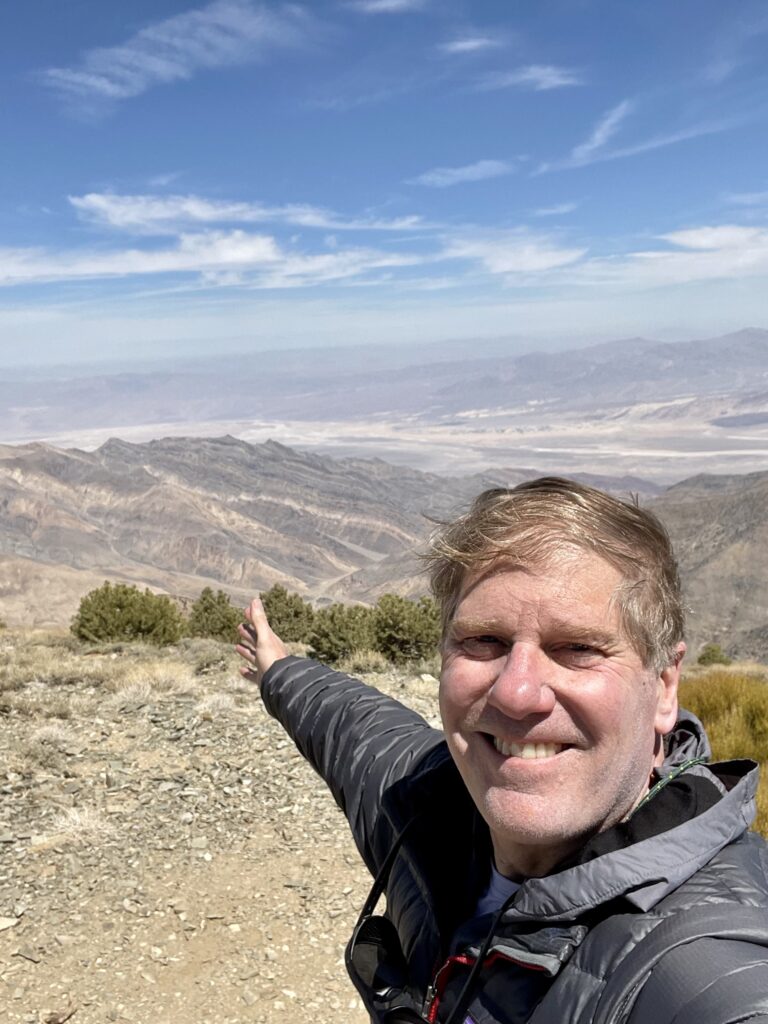
My inner-hiker ego required me to consider a bid for the highpoint, Telescope Peak, at 11,043 ft, but alas, I was too early in the season. The access road was not yet open. But I did summit nearby Wildrose Peak, which per National Geographic, is considered one of the 10 best, less-strenuous summits in the national park system. At 8 miles round trip, you get all the same tremendous views of the valley nearly 10,000 feet below as on Telescope for half the hiking distance. Here, the snowpack had melted for the most part, so the trail was clearly visible, which was a good thing – absolutely no cell service, and I hadn’t pre-downloaded the trail map.
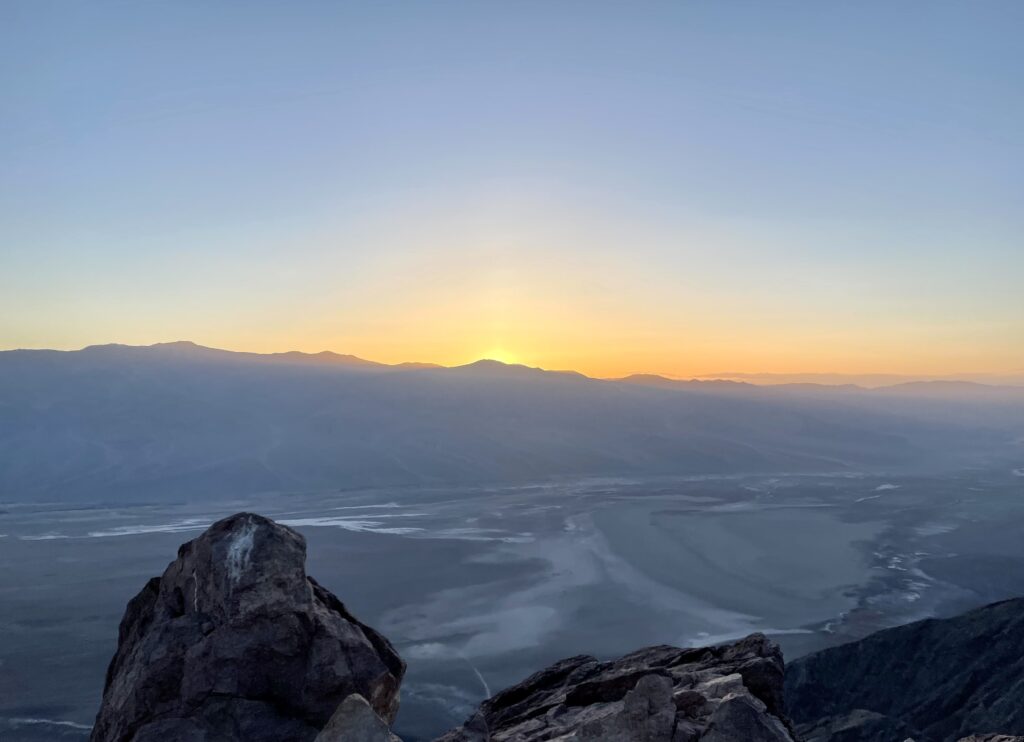
For much less work than those peaks, you can get stupendous views from two drive-ups: Dante’s View and Zabriskie Point. I consider these “Don’t Miss” opportunities, too. The former is best at sunset, the latter at sunrise.
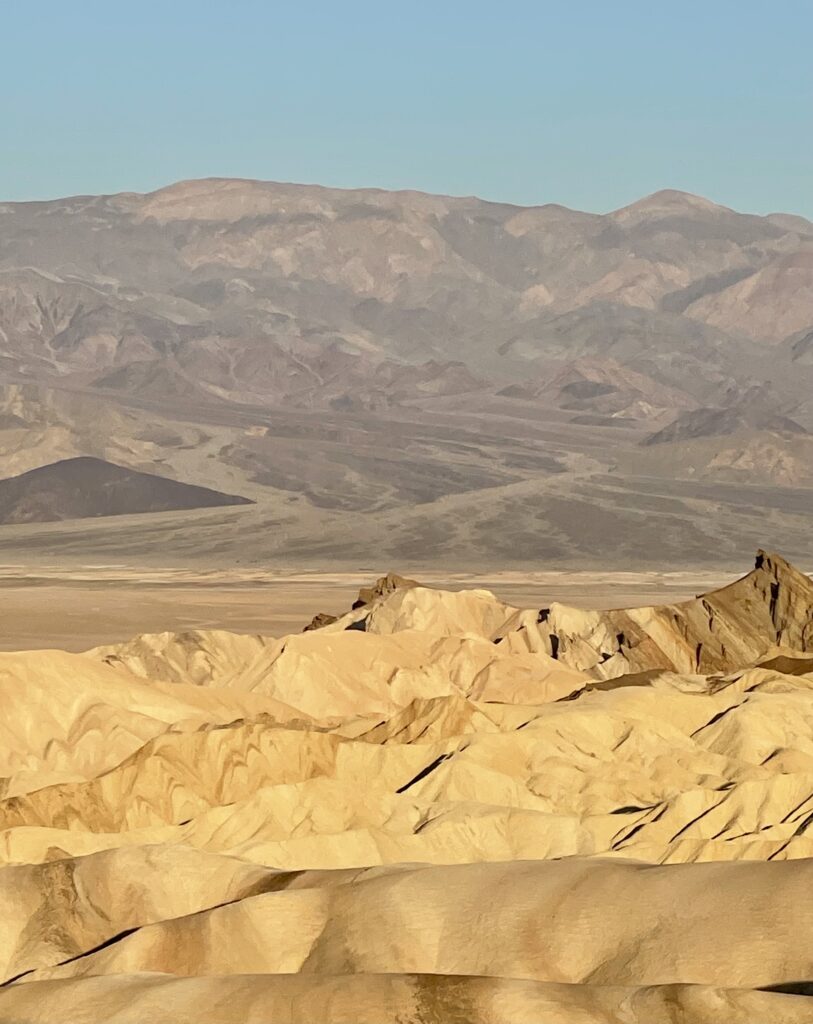
Fun Fact and Tip: Daytime temperatures here drop about 5 degrees for every thousand feet of elevation. So, for the peaks and other points at elevation, dress warmly. It was 90 F in the valley and 40 F on top of Wildrose. Sunset and sunrise were also quite brisk at Dante’s and Zabriskie.
And there you have it! Another spectacular hiking trip that I highly recommend, plus you can make a short trip to Vegas for an easy departure home! Whether you embark on this as a solo trip or with friends, Joshua Tree and Death Valley National Parks are two extremes that every park lover should experience.

